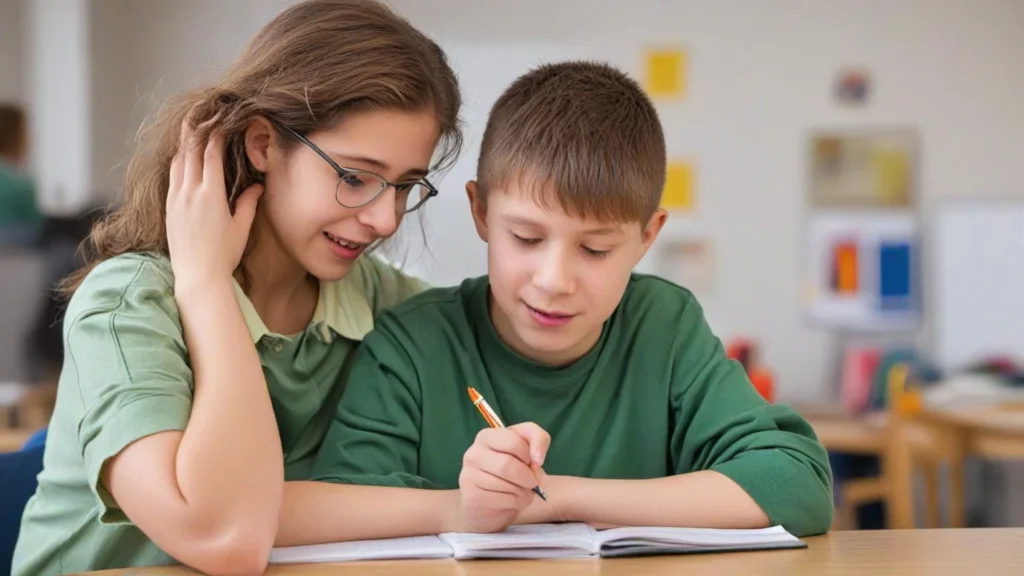Supporting students with learning disabilities is crucial for their academic success and overall well-being. These students may face unique challenges in the classroom, but with the right strategies and interventions, educators and parents can make a significant difference in their educational experience.
This article provides a detailed guide on how to help students with learning disabilities, offering practical tips, effective interventions, and best practices for creating a supportive learning environment.
How Can You Help Students with Learning Disabilities?
Helping students with learning disabilities involves understanding their specific needs and implementing effective strategies to support their learning. Here are some key approaches:
Understand the Learning Disability
Learn About the Disability: Gain a thorough understanding of the student’s specific learning disability. Each disability, such as dyslexia, ADHD, or dysgraphia, affects learning in different ways. Understanding these conditions will help you tailor your support strategies.
Consult with Specialists: Work with special education teachers, school psychologists, and other specialists to gain insights into effective teaching methods and accommodations for the student’s needs.
Create a Supportive Classroom Environment
Foster an Inclusive Atmosphere: Develop a classroom culture that values diversity and encourages all students to participate. Promote an environment where students with learning disabilities feel accepted and supported.
Use Positive Reinforcement: Recognize and celebrate the student’s efforts and achievements. Positive reinforcement boosts self-esteem and motivates students to continue working hard.
Implement Individualized Education Plans (IEPs)
Develop an IEP: Collaborate with parents, teachers, and specialists to create an Individualized Education Plan (IEP) tailored to the student’s specific needs. The IEP should include goals, accommodations, and modifications designed to support the student’s learning.
Regularly Review and Update the IEP: Continuously assess the student’s progress and adjust the IEP as needed. Regular reviews ensure that the accommodations and goals remain relevant and effective.
Provide Appropriate Accommodations and Modifications
Adjust Teaching Methods: Implement teaching strategies that accommodate the student’s learning needs. For example, provide written instructions for students who struggle with verbal directions, or use visual aids to reinforce concepts.
Modify Assignments: Adjust the difficulty level of assignments to match the student’s abilities. This might include breaking tasks into smaller steps or providing extra time for completing assignments and tests.
Offer Additional Support Resources
Provide Access to Support Services: Ensure that students have access to additional resources such as tutoring, counseling, or specialized educational programs. These services can offer extra help and support outside of regular classroom instruction.
Encourage Self-Advocacy: Teach students how to advocate for themselves by understanding their learning needs and communicating them to teachers and peers. Self-advocacy skills are essential for students to succeed in school and beyond.
How Do You Support a Child with a Learning Disability?

Supporting a child with a learning disability requires a combination of understanding, patience, and practical strategies. Here’s how you can support a child both at home and in collaboration with educators:
Educate Yourself About the Disability
Research Learning Disabilities: Learn about the specific learning disability your child has. Understanding the challenges and strengths associated with the disability will help you provide better support.
Attend Workshops and Training: Participate in workshops and training sessions on learning disabilities. These opportunities provide valuable information and connect you with other parents and professionals.
Work Closely with Teachers and Schools
Establish Open Communication: Maintain regular communication with your child’s teachers. Discuss your child’s progress, challenges, and any concerns you may have. Collaboration with educators ensures a consistent approach to supporting your child.
Attend IEP Meetings: Be an active participant in IEP meetings. Share your observations, ask questions, and work with the team to develop and review the IEP. Your input is crucial in creating effective educational plans for your child.
Create a Supportive Home Environment
Provide a Quiet Study Area: Designate a quiet, distraction-free space for your child to complete homework and study. A well-organized study area helps children focus and work more effectively.
Encourage a Routine: Establish a daily routine that includes time for homework, breaks, and recreational activities. Consistent routines help children manage their time and reduce stress.
Help with Homework and Study Skills
Assist with Homework: Provide guidance and support during homework time. Break tasks into manageable steps and offer encouragement without doing the work for your child.
Teach Study Techniques: Help your child develop effective study skills, such as organizing notes, summarizing information, and using mnemonic devices. These techniques can improve their academic performance.
Promote Emotional Well-Being
Offer Emotional Support: Be supportive and understanding of your child’s feelings and experiences. Validate their emotions and provide reassurance and encouragement.
Foster Positive Self-Esteem: Encourage your child’s strengths and celebrate their successes. Help them build confidence and develop a positive self-image.
What Are the Interventions for Learning Disabilities?

Interventions for learning disabilities are designed to address the specific needs of students and help them succeed academically. Here are some effective interventions:
Educational Interventions
Specialized Instruction: Provide instruction tailored to the student’s learning disability. This might include one-on-one tutoring, specialized reading programs, or structured study sessions.
Assistive Technology: Use technology tools such as text-to-speech software, audiobooks, or organizational apps to support learning. Assistive technology can help students overcome barriers related to their disabilities.
Behavioral Interventions
Behavioral Therapy: Implement behavioral therapy techniques to address specific challenges such as attention issues or impulsive behavior. These techniques can help students develop better self-control and focus.
Classroom Management Strategies: Use effective classroom management techniques to create a structured and supportive learning environment. This includes setting clear expectations, providing consistent feedback, and using visual schedules.
Social and Emotional Interventions
Counseling Services: Provide access to counseling services for students who need support with emotional or social challenges. Counseling can help students develop coping strategies and improve their emotional well-being.
Social Skills Training: Offer training to help students develop social skills, such as communication, problem-solving, and conflict resolution. Social skills training helps students build positive relationships with peers and adults.
Parental Involvement
Parent Training Programs: Participate in parent training programs to learn strategies for supporting your child’s learning and advocating for their needs. These programs offer practical advice and resources for parents.
Home-Based Interventions: Implement home-based interventions such as reading together, practicing math skills, or using educational games. These activities reinforce classroom learning and provide additional practice.
What Is the Best Way to Support Students with Multiple Disabilities?
Supporting students with multiple disabilities requires a comprehensive approach that addresses each of their needs. Here are some strategies for providing effective support:
Develop a Comprehensive Support Plan
Collaborate with Professionals: Work with a team of specialists to develop a support plan that addresses all aspects of the student’s disabilities. This team may include special education teachers, therapists, and medical professionals.
Create a Unified Approach: Ensure that the support plan is consistent across different settings, such as home and school. A unified approach ensures that the student receives coherent and effective support.
Provide Specialized Resources and Services
Access Specialized Programs: Utilize specialized educational programs and resources designed for students with multiple disabilities. These programs offer targeted support and interventions.
Adapt Instructional Materials: Modify instructional materials to meet the needs of students with multiple disabilities. This might include using large print books, providing alternative formats for assignments, or offering hands-on learning experiences.
Promote Inclusive Practices
Encourage Inclusion: Foster an inclusive classroom environment where students with multiple disabilities can participate in general education activities. Inclusion promotes social interaction and a sense of belonging.
Use Differentiated Instruction: Employ differentiated instruction techniques to accommodate diverse learning needs. Tailor your teaching methods to address the various challenges faced by students with multiple disabilities.
Support the Student’s Overall Development
Focus on Holistic Development: Address the student’s academic, social, emotional, and physical needs. A holistic approach ensures that all aspects of the student’s development are supported.
Encourage Self-Advocacy: Help students with multiple disabilities develop self-advocacy skills. Teach them to communicate their needs and seek appropriate support.
Conclusion
Supporting students with learning disabilities requires a thoughtful and multi-faceted approach. By understanding their needs, creating supportive environments, and implementing effective interventions, educators and parents can help these students succeed in their educational journey.

